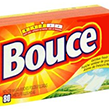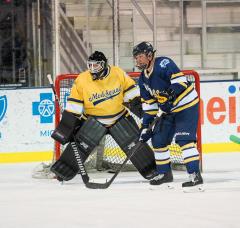So there's a broad spectrum of neurological issues that can affect a player, including what is typically called mental illness, but it depends on what you're asking about. Certain learning disabilities such as dyslexia can make learning things like "right" and "left" difficult, as well as pattern recognition. Autism spectrum disorders and sensory processing disorders can have an effect on how a player interprets external stimuli (instructions, whistles, lights, etc) as stressful or confusing. Many learning disabilities (language based and nonverbal) affect gross and fine motor control. For example I know some people who, because of their particular wiring, have a very hard time with things like swimming because it's difficult for them to coordinate a pattern of movement (treading water, stroke-breathe-stroke, etc) as well as being a sensory-disorienting environment.
What are typically called mental or psychiatric illnesses, such as depression, anxiety, or bipolar disorder, are generally considered to have a genetic component that causes a miswiring in the brain, much the same as the above disorders. Sometimes, these are co-morbid, meaning a person with ADHD can have anxiety, or someone with dyslexia can have depression or bipolar disorder. Unfortunately, substance use or misuse is also often co-morbid with mental illness, in part due to lack of access to appropriate support, treatment, and education.
First good tactic is get to know your players. Especially young players - let them engage you in conversation, connect with them. Having a good, stable connection to a supportive person does wonders for folks with neurological differences (as it does for most people, but especially important). An added bonus here is that young people with disabilities/mental illness are at significantly higher risk for abuse, and connecting with a trustworthy adult makes them that much less vulnerable.
Have clear, consistent expectations. Doesn't mean you have to have the ice-hockey Code of Hammurabi in stone at your rink, but come up with some basic expectations for both you and your players. If you have a formal team format (vs. the free for all of a learn to play), feel free to write them down and distribute them. Things like treating each other with respect (don't call names, no hurting people on purpose, etc), following the rules of the game, being good listeners, are things that apply to player and coach. If you don't follow your own rules, no one will feel like following them either. Consistent, but flexible. Mean what you say - if you say "I will give you two warnings [for behavior] and on the third, you sit on the bench/on the side for [x] minutes", then follow through.
Relatedly, change is hard for folks with learning disabilities and mental illness, who may already feel extra stress from trying to navigate neurotypical norms and internal chaos. Come up with a plan - today we will have 5 stations, and we will rotate every 10 minutes (do the math as you like), explain the plan, confirm the plan. When players arrive at a station, be ready, explain, and give appropriate warning when you're going to switch - "in 2 minutes, Coach Bob will blow the whistle, and everyone will go to Coach Jen's station". Having clear plans and expectations is far less anxiety provoking than surprises (tho again, being flexible and asking for input from players is good). In my magical imaginary world, there's about a 3:8-12 coach to player ratio (depending on age and player need - younger players need a higher coach-to-player ratio), so you can have someone who explains verbally, someone who demonstrates, and someone who can physically go through and help players with the exercise.
Back to learning your players - in a team format where you can wrangle them in a locker room, go over a practice. What was the best thing? What was the worst thing? Open the lines of communication - maybe they really liked something that you didn't expect, or maybe someone has an idea. Watch them, and pick up on things like who the leaders are, and who the more shy kids are, who the disruptive ones are. Kids with ADHD can be easily overstimulated but when they like something, they can hyperfocus on it for hours. Give your disruptive kid something to do - say, ok, Teddy, you're going to help me demonstrate. Or, Kate, Liam, Sean, your job today is to pick up all the cones at the end of practice, and bring them to the bench.
Talk with parents, too. Just like you would for a child with diabetes or asthma or a severe allergy - connect with the parents and say, hey, what works for your kid? What can I do that will make things consistent? Is anything going on, anything changing like medication or a new therapist or a new school?
I think the meat of it honestly is communication and connection. Understand that some people will get more easily overwhelmed, and be ready to adapt to that. Use your players' strengths and give them agency and keep them from feeling isolated.



